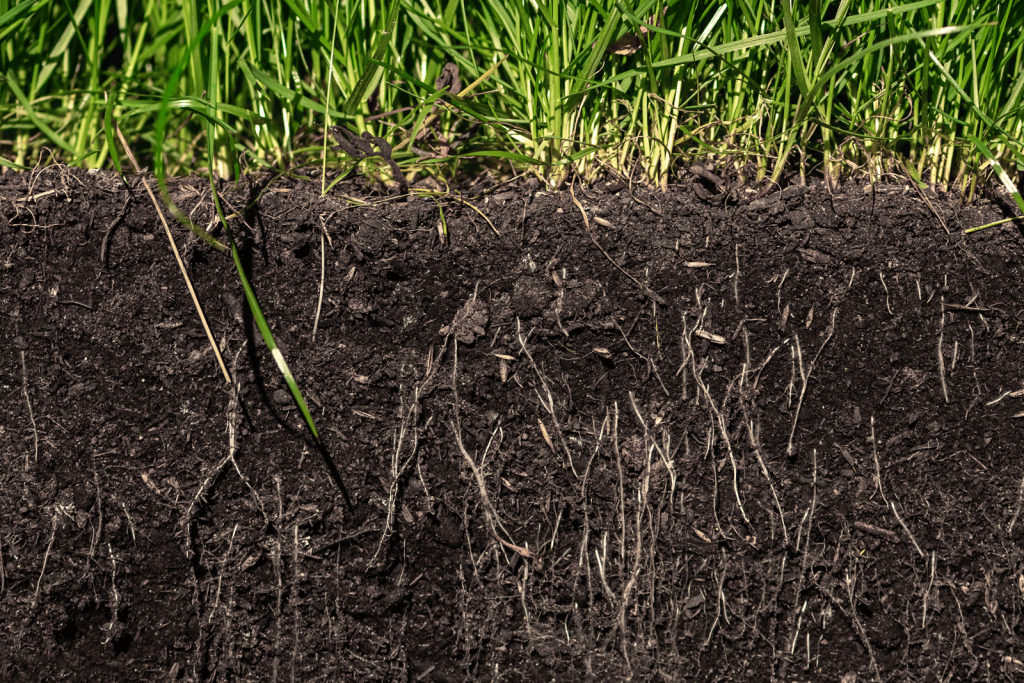The Lasting Impact of Native Vegetation on the Land Beneath Our Feet
For landowners participating in the Conservation Reserve Program (CRP), the benefits of enrolling go far beyond short-term incentives or visible landscape changes. One of the most transformative, and often overlooked, impacts of CRP is its ability to significantly improve soil health and fertility over time.
At FDCE, we’ve seen firsthand how native vegetation can restore degraded soils and promote sustainable land use. Here’s a closer look at how CRP practices help revitalize the foundation of agriculture: the soil.
Enhancing Soil Structure with Native Roots
When marginal or unproductive cropland is planted with native grasses and forbs, it begins a natural process of rebuilding soil structure. Deep-rooted native plants:
- Break up compacted soils, improving aeration and water infiltration
- Create organic channels that support microbial activity and soil fauna
- Stabilize topsoil, reducing loss from wind and water erosion
Improved soil structure leads to better water retention and resilience against drought, making the land more productive in the long term, even after a CRP contract ends.
Promoting Nutrient Cycling
Native vegetation supports a dynamic underground ecosystem that drives nutrient cycling. As plant roots grow, die, and decompose, they:
- Return carbon and organic matter to the soil
- Stimulate beneficial microbial activity
- Encourage the formation of humus, a stable organic component that retains nutrients and moisture
These processes naturally enrich the soil, reducing reliance on synthetic fertilizers and promoting a healthier growing environment.
Controlling Erosion and Protecting Topsoil
One of the primary goals of CRP since its inception has been to reduce soil erosion. Native plant cover offers year-round protection by:
- Buffering rainfall impact, preventing surface runoff
- Anchoring soil with dense root systems
- Reducing wind erosion across open fields
By minimizing erosion, CRP ensures that valuable topsoil stays where it belongs, on the field, supporting future crops and conservation practices.
Increasing Soil Organic Matter
Soil organic matter is a key indicator of soil health. CRP fields tend to see steady increases in organic matter due to the constant input of plant residues and root biomass. This improves:
- Soil fertility
- Water-holding capacity
- Cation exchange capacity (CEC), which enhances nutrient availability to plants
Over the life of a CRP contract, these improvements can make a dramatic difference in soil productivity and sustainability.
Long-Term Benefits Beyond the Contract
Even after CRP enrollment ends, the soil health benefits often persist. Landowners frequently find:
- Higher yields when transitioning back to production
- Lower input costs due to improved soil fertility
- Greater flexibility in future land use decisions
These long-term advantages make CRP a strategic investment not just in conservation, but in the health and future productivity of the land.
FDCE: Supporting Soil Health Through Strategic CRP Implementation
At FDCE, we understand that the key to soil health is thoughtful, science-based land management. That’s why our turnkey CRP services include:
- High-quality native seed selection
- Customized site preparation and herbicide plans
- Proprietary BOOST micronutrient enhancement
- Precision planting using specialized equipment
With over 400,000 acres of habitat successfully established and a consistent 97% success rate, we help landowners unlock the full soil health potential of CRP.
Restore Your Soil, Restore Your Land
Healthy soil is the backbone of any successful agricultural or conservation project. By enrolling in CRP and partnering with FDCE, landowners take a meaningful step toward restoring the land, one root at a time.
Contact FDCE today to learn how we can help you improve your soil health through smart CRP practices and long-term planning.

